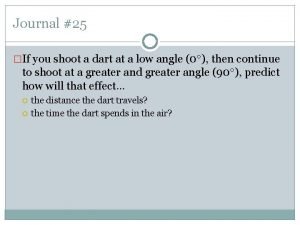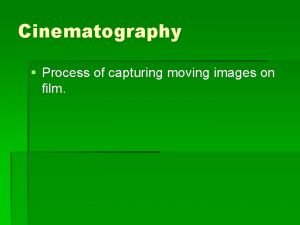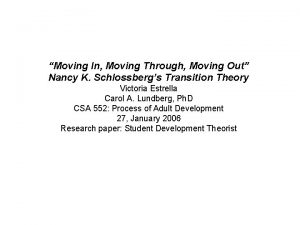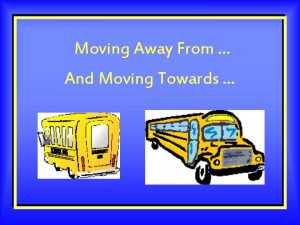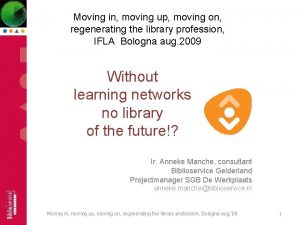MOTION MOTION Motion is the process of moving









- Slides: 9

MOTION

MOTION Motion is the process of moving or changing places or position Anything you do while moving is motion. • Fact: Speed is a major type of Motion

DETERMINING MOTION • In order to determine motion you must know direction and speed • To describe motion accurately and completely, a Frame of Refrence* is necessary • You can’t determine motion without a type of force • The object’s motion doesn’t change if there is no force acted upon it * A system of objects that are not moving with respect to one another

FORCE • Force* is a major part in motion. Without force motion wouldn’t exist. • Force can speed you up or slow you down Examples of force: • Wind • Gravitational Force • Electrical Force • Normal Force * Strength or energy as an attribute of physical action or movement Fact: Electric force and magnetic force are the only forces that can both attract and repel

SPEED Speed* falls in multiple categories/subsections such as: • Acceleration • Velocity • Average Speed • Instantaneous Speed * The ratio of the distances an object moves to the amount of time the object moves

Acceleration is equal to net force/mass ACCELERATIO Describes the situation in N Acceleration is (A=Vf-Vi/T) the rate at which velocity changes which the speed of an object is increasing, but isn’t always the result of changes in speed Constant Acceleration Non-Constant Acceleration Car Speed 3. 5 6 3 5 2. 5 4 2 3 1. 5 2 1 0. 5 1 0 0 1 2 3 Car Speed 4

VELOCITY • The speed and direction in which an object is moving • Sometimes the motion of an object involves more than one velocity. • The change in velocity can be the result of a change in speed, a change in direction or both • Acceleration and Velocity are both vector quantities • The velocity of an object moving in a straight line changes at a constant rate.

AVERAGE AND INSTANTANEOUS SPEED Average • The total distance* travelled • Computed for the entire duration of a trip, and instantaneous speed is measured at a particular instant Instantaneous • The rate at which an object is moving at a given time • Example is the speedometer *Distance- the length of the path between two points *Displacement- the direction from the starting point and the length of a straight line from the starting point to the ending point

NET FORCE & MOMENTUM Net Force • Net force is the overall force acting on an object • If an object hits another object they produce the same net force Momentum • the quantity of motion of a moving body, measured as a product of its mass and velocity • An object has a large momentum if the product of its mass and velocity is large • The loss of momentum in an object becomes a gaining in momentum in another object
